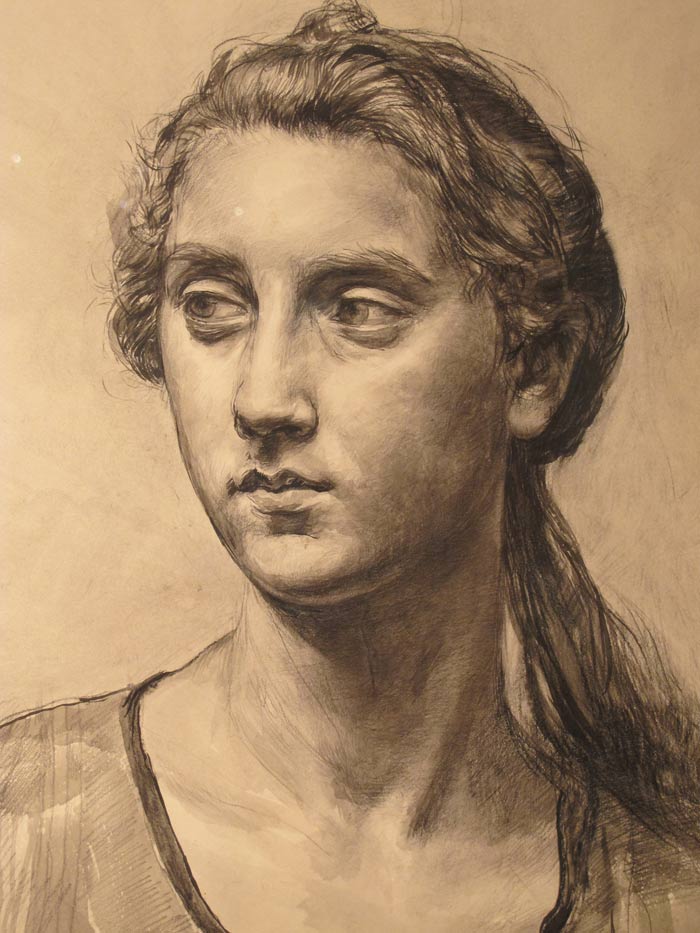Question from Ray Habyan
I have always started my drawings by either using a light box or projector to get the fine details. Now I am not using either of those and seem to not be able to get the critical likeness of my subjects down, especially the eyes, nose, and lips. What do I do to mitigate this?
Thanks
Ray
Hi Ray,
Many thanks for your email and question.
Yes, it is normal to have some challenges along the way; and, of course, in the beginning your accuracy when drawing ‘by eye’ will not be the same as when you copy using a light box or projector.
Your goal, however, is to gain the necessary knowledge of drawing techniques and to increase accuracy in your eyes and hand, so you can draw proficiently without relying on copying equipment.
Think of it as if you are learning to drive a car. Let’s say that you have been driving an electric golf cart for quite a time; it was the vehicle you were taught to drive in and is the only one you’ve ever driven. Now you want to drive a sports car with manual transmission. You can recognize at once the challenge. You need to learn new skills to operate this vehicle.
I want you to become a professional, so you can draw whatever you want and not be handicapped by copying equipment. If your light-box and projector were taken away today, would you still be a skillful draftsman?
As with any new skill, learning to draw will take time and practice. With persistence and dedication, however, you can achieve what you want.
It might be not easy or fast, but the reward is great – a completely new level to your artistic abilities that allow you to draw anything you want from life, memory, or imagination without merely copying reference images.

You mentioned that you want improve likeness when drawing your subjects’ eyes, nose, and lips.
I have a feeling that other parts of your portraits might need more polish as well. We recognize faces by their eyes, nose, and lips; that’s why you see mistakes in these features first. At the same time, those features need to be positioned correctly on the head, so accurate portrait drawing starts not from individual features but from constructive drawing of the head. Any mistakes in depicting the head’s shape and volume cannot be corrected later on by accurate representation of other features.
The rules of accurate drawing are the same regardless of what you draw – the shape of the head or a detailed eye.
Accuracy, and therefore likeness, in portrait drawing is the result of several disciplines:
– knowledge of the anatomy of the human head;
– knowledge and use of constructive drawing principles;
– correct use of perspective and foreshortening;
– correct depiction of tonal values using proficient rendering techniques.
I know it sounds quite demanding, but I hope you see now why copying is not the same as proficient drawing.
There’s no one trick that will turn anyone in a professional draftsman. Skill in portrait drawing grows out of smaller tasks, like drawing geometrical objects in perspective, learning constructive drawing principles, studying the bones and muscles of the human head, understanding the geometrical shapes that constitute facial features, and so on.
Accuracy will improve with time and practice. Keep drawing, set meaningful tasks, and achieve positive results as you move through them.
I’m here to help you with any art questions you have.
Best regards,
Vladimir London
Drawing Academy Tutor






I once used a light box and a projector but finally gave it up. Once I did that and focused my effort and knowledge I noted improvement but because I have no significant educational background regarding portraits I still have a tough time. I also tried YouTube for awhile. I learned how to draw eyes in magnificent detail, lips, ears and eyes but I guess my understanding of structure was absent because the portraits I try just do not fully make it because none of these address the necessity of anatomy.
The comments made here by Vladimir are so crucially important to understand.
Learning skeletal muscular is the answer to many months of practice. Thank you